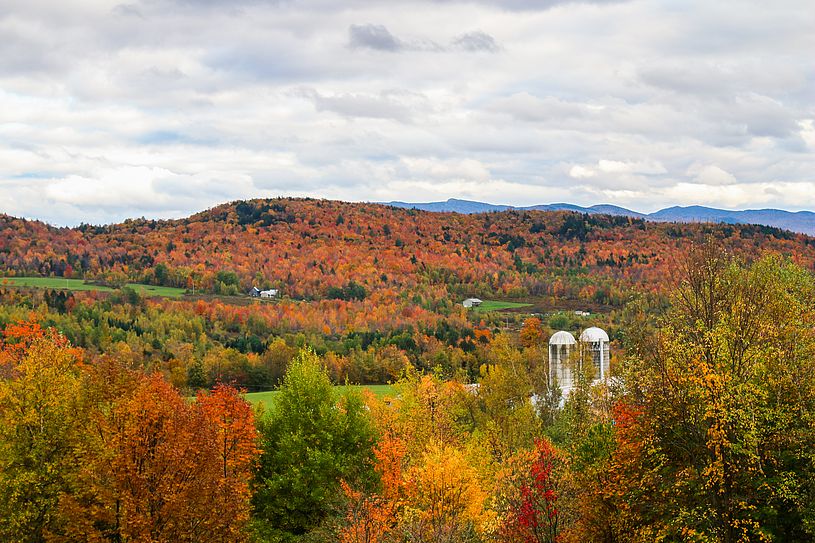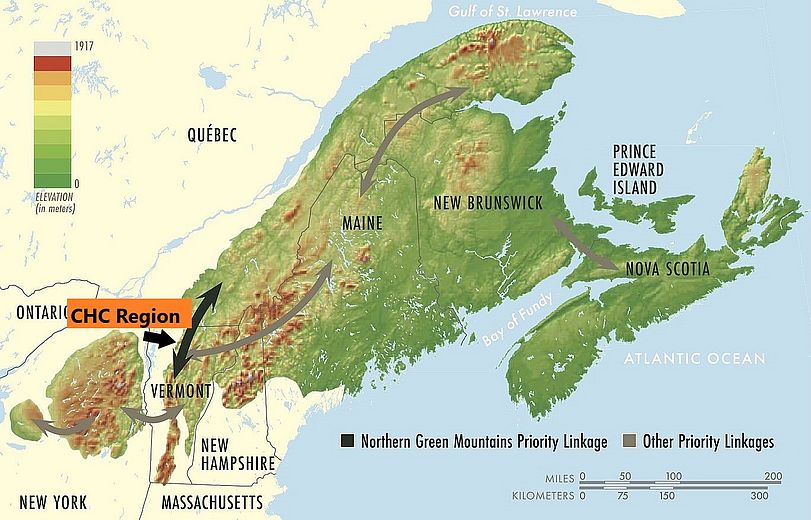Consider: The Place
Geography Matters
For Cold Hollow to Canada, the geographical setting is the primary motivation for the program.
What happens HERE, in this place, matters.
Our message to landowners is equally simple: Your role in stewarding THIS PLACE matters.
It is the landowners’ shared love of this place that brings them together.

While your geography may be different, is place integral to your program’s purpose? What’s special about your geography? Why should people care about what happens here? How does the stewardship of a single parcel fit into a bigger puzzle?
If geography is not one of the primary reasons to instigate a program, think about what will bring people. What connects the people of your program? Why should they care about their land?
Logistics and Place
Geography also matters from a logistics perspective. If the geography is too large, people may not be willing to travel to the opposite side. If it’s too small, you may not attract a large enough group to make it worthwhile. Keep in mind that each community has a different comfort level with travel. In some commuter communities, people are accustomed to making long drives, and they may be willing to travel long distances. In our rural CHC towns, many are reluctant to travel even to the next town over, and a 10-mile distance could cause a program to flop.
For the most part, CHC’s program boundaries match town boundaries, with one program per town. However, four towns in our region have particularly small populations, and we didn’t think a single town would be able to support a program on its own. In these communities, we have combined two neighboring towns for a single program. These are our newest programs, and we’re still seeing how well this model works. So far, programs in these communities have terrific attendance–but participants definitely seem more likely to attend programming in their own town.
Overall: Setting the boundaries of your geography needs to make sense from both a project purpose perspective and a community perspective. People want to learn about their place. Where are the logical boundaries of that place?

CHC’s Geographic Story
The forests of the CHC region lie at a crucial nexus for wildlife traveling across the greater Northern Forest. This wildlife linkage, known as the Northern Green Mountains Priority Linkage, runs from the northern Green Mountains in the United States to the Sutton Range in Canada and has been identified by Two Countries, One Forest as one of the top six wildlife connectivity linkages in the Northern Forest.
As a regional crossroad, the ridges and valleys in the Cold Hollow Mountains provide crucial habitat links for wildlife from across the northeast. From New York to Nova Scotia, wide-ranging mammals are connected via an elaborate habitat network that allows for the flow of genetic diversity and keeps populations strong by enabling wildlife such as black bear, moose, bobcat, and fisher to travel as far as they need to.
At the same time, Vermont is now losing forest cover for the first time since the mid-1800s. Today, with increased forest fragmentation caused by development and the added stresses and habitat alterations caused by a changing climate, we risk losing the important contributions that working forests make to our economy, our ecology, and our culture. Furthermore, degradation of the Northern Forest's connecting landscape throughout the CHC region could isolate forests lying to the north and south. Because of this, maintaining protecting forests throughout the Cold Hollow Mountains is key to achieving our vision of a resilient and connected ecosystem across the Northern Forest.
What happens right here is key to maintaining healthy forests and wildlife across the entire Northern Forest!
And because most forestland is in private ownership, the stewardship decisions made by individual landowners have an impact far beyond our borders.

